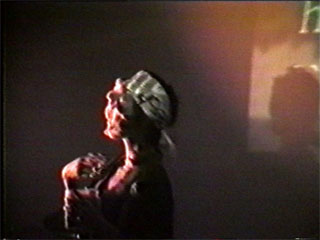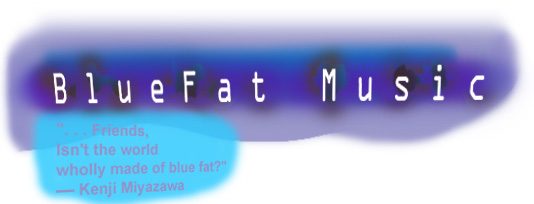

Madame Strangelove, or How I Stopped Worrying and Learned To Love the XXXX (1989)

Astro Boy Meets Godzilla (1986 - 87)

Neither Garlic Nor Beans (1984 - 88)

R IKA OHARA Selected Works
| Shelter (1989 - ) |  |
| Tokyo Rose (1991 - 1995) |  |
Madame Strangelove, or How I Stopped Worrying and Learned To Love the XXXX (1989) |
 |
Astro Boy Meets Godzilla (1986 - 87) |  |
Neither Garlic Nor Beans (1984 - 88) |  |
R
ika Ohara has been combining time-based visual media and live dance-theater-informed performances in her interdisciplinary works since the early '80s. Breaking rules and stretching available technology -- projecting negative films and Xerographic transparencies, optically bending and otherwise manipulating images -- she has inspired one observer to call her work "low-budget high-tech."Born in Saitama, Japan, into a family of a historian father, teacher mother and WWII-survivor grandmother with socialist cousins, she drew and painted from an early age. Her early influences include Osamu Tezuka, the creator of Astro Boy and Kimba the White Lion, who spotted her work in a college comics club publication -- to which she contributed as a junior high schooler -- and encouraged her to pursue a career in cartooning.
Arriving in the U.S. in 1980, she studied with Czech surrealist photographer Vilem Kriz at California College of Arts and Crafts in Oakland and movement with Simone Forti in New York City and began combining various media in conceptual art works, film/video and installations. Her MFA thesis project at California Institute of the Arts (1985) was a dance-theater adaptation of Oscar Wilde's SalomÈ, in collaboration with choreographer Tracy Rhoades.
It was also during her years at CalArts that she stumbled upon a subject that would propel her into a series of performance-art pieces that spanned more than a decade: nuclear destruction and its socio-psychological significance. Neither Garlic nor Beans (1983-85/88) was presented at San Diego's SUSHI, Inc. as part of NeoFest in 1985 and was named "Among the Best" by the San Diego Gayzette along with works by Rachel Rosenthal and Eric Bogosian. Astro Boy Meets Godzilla (1986-87) followed, shifting the focus to mediated experiences shared by children in Japan and the U.S., and introducing the "Trade War" motif she would later explore in Tokyo Rose. Concurrently, Ohara developed her ideas and techniques for sequential use of still images by earning a living as a still photographer on a laserdisc project.
After a tour of Germany and Holland in 1988, Ohara began working on Shelter, based on a dream she had of awaiting nuclear destruction in a glass shelter. The piece developed in a series of site-specific installation/performances on city streets, on the beach, on rooftops and in performance spaces around Los Angeles. The mutating group of performers came to be known as "The Nuclear Family."
Ohara & The Nuclear Family toured the western U.S. with Tokyo Rose (1993-95), a multimedia examination of racial and sexual xenophobia. They were ready to extend the tour internationally when financial problems closed the Paris American Center's theater just four months before their May 1996 performance dates. The Kitchen in New York and venues in Glasgow, Sydney, Minneapolis, Cleveland, among others, also postponed presentation following the world-wide art recession.
Undaunted, Ohara produced Shelter (Phase VII) (Huntington Beach Art Center, 1997), shooting 2,000 slides from new image sources, adding digital video and reworking the choreography. In 1999, a virtual version of the Nuclear Family traveled to Tokyo in a video-on-slides installation, Shelter 8. A year later, Shelter went all digital at Monaco Danses Dance Forum, followed by exhibitions in Paris and Berlin.
Ohara continues to create hybrid art projects, combining performance, media and installations, as well as choreographing and directing others in theater and new music pieces. She is a recipient of California Arts Council New Genre Fellowhsip for 2001-2002; her works have been funded by New Langton Arts/NEA Regional Arts grant (1995-1996), California Arts Council Touring and Presenting Program (1995-97) and the City of Los Angeles (1990-91; '91-'92; '92-'93; '94-'95), among others. One of the first to publicly criticize the abuses of multiculturalism (1992), she has contributed cultural essays, film and book reviews to the L.A. Weekly (1992-97) and lectured at University of Kentucky and the California Museum of Photography, as well as on radio and television.


